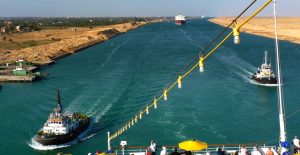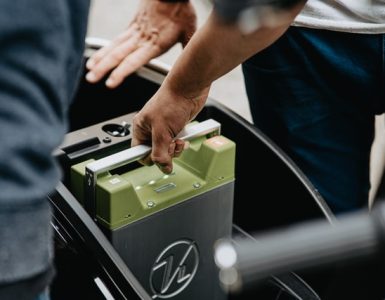The 193.30 km (120 miles) long Suez Canal is an artificial man-made waterway located in Egypt and connects Europe (Mediterranean Sea) with Asia and Africa through the Gulf of Suez (a northern branch of the Red Sea).

The Suez Canal is one of the most heavily used shipping routes in the world, witnessing the passage of thousands of vessels every year.
The canal, which separates Asia from the African continent, offers the shortest maritime route between Europe and the regions that share a border with the Indian Ocean and the Western Pacific Ocean.
The journey from Europe through the Mediterranean Sea and the Red Sea, transiting through the Suez Canal, cuts around 7,000 kilometers off the journey compared to the one carried out through the South Atlantic and southern Indian oceans. The estimates have mentioned that the shortcut reduces the distance by 43%.
The Suez Canal is one of the world’s most significant waterways as it supports 8% of the world’s shipping traffic. As of 2018, over 17,000 ships pass through the waterway each year, which means that almost 50 ships per day make the transit.
Mainly, the cargo comprises oil from the Arabian Gulf to Western Europe and manufactured goods and grain from Europe and North America to the Far East and southern Asia.
Total revenues are over $3 billion per year, making the Suez Canal a major revenue source for Egypt.
The Suez Crisis and Controversies
The canal was officially opened on 17 November 1869 and has been the center of umpteen controversies around its ownership.
The canal which divides Israel and Egypt has seen wars, bombs being dropped, people being killed, and many politicians losing their positions. France, the UK, the USA, and the then Soviet Union, along with many countries, have been involved in discussions and opinions.
While there are views and judgments on the Suez Crisis, we will not get into any of that. There are many articles, expensive books already published on that subject. We would rather focus on the company which constructed this canal and the cleanliness aspects of the company, which not many articles focus on.
The Company in brief
The Suez Canal Company was established to build this maritime route between 1859 and 1869. Post the construction, the Paris headquartered company has been at the helm of major infrastructural development activities for the last 160 years. More specifically towards the aspects which are focused on sanitation, waste management, and cleanliness.
The Cleanliness aspects of the Company
The industrial revolution, which started to kick in from the end of the 19th century led to a large number of people migrating to big cities and towns. The new dwellings and evolving lifestyle created loads of household waste. With a lack of supporting infrastructure, the buildup of waste created health and sanitation issues.
During that time, the concept of wastewater treatment did not exist, and the water which was taken from the rivers was returned as sewage. With streets and places choked with filth, the quality of life started deteriorating.
Looking into this precarious situation across the region, gradually from the late 1800s and early 1900s, water and wastewater infrastructure started to take shape with long-distance pipes and networks. With better systems in place, there was an immediate impact on improved health conditions and life expectancy.
With each passing year, the Suez Canal company started making inroads in creating infrastructure and systems for sanitation and cleanliness activities.
- In 1919, Suez came out with one of the world’s first motorized refuse collection vehicles and introduced a waste collection system.
- In 1935, Suez launched Rey-SITA trucks, with mechanical packing and automatic compression. This increased waste management capacity.
- In the 1960s, with increasing urbanization, they introduced SITA 6000 trucks for waste collection and disposal. The company created storage facilities and the first-ever incineration units, which involved the treatment of the organic substances contained in waste materials.
- In 1969, they came up with a reverse osmosis desalination plant, which allowed the processing of drinking water and irrigation water from seawater/salty water
- In 1981, they created CIRSEE, an international water and environment research center, where experts constantly find opportunities to improve water quality, waste management, and environmental protection.
- Post-2000, some really smart systems have been established. Heat and biogas produced from wastewater are used to heat houses and buildings, and even for transport. Solar power is used to desalinate seawater. Even processing wastewater which can be used by the industries. Helping companies treat their own waste to produce green energy. They have created labs to recycle plastic at a massive scale.
In conclusion, the Suez Canal’s importance is not just in connecting water bodies and facilitating trade, but the Suez Canal company, which built it, played a crucial role in waste management, sanitation, environment, and cleanliness.






Add comment